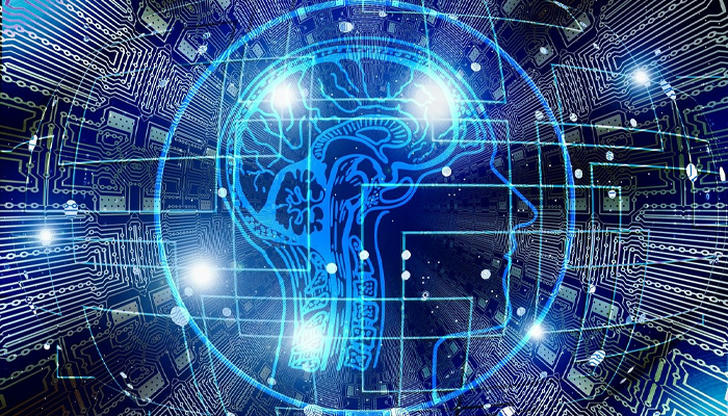How AI is Revolutionizing Language Learning

Artificial intelligence is no longer confined to the realms of science fiction. In fact, it has profoundly altered various aspects of our lives, with one particularly significant area of transformation being language learning.
As global connections tighten, proficiency in multiple languages is not just an advantage but often a necessity. Technology has evolved from being merely a tool to an indispensable part of any learning process. Traditional methods of language learning are evolving to make way for innovative approaches incorporating artificial intelligence.
This article delves into the significance of this integration, analyzes various AI technologies, explores the benefits of artificial intelligence in language learning, and discusses future trends.

Current State of Language Learning
While traditional methods of language learning are not being discarded, we cannot ignore the development of technology. Of course, this does not mean that artificial intelligence should replace everything; rather, it should be seen more as a complement to traditional learning processes.
• Traditional Learning Methods and Their Challenges
For a long time, language learning has relied on methods such as textbooks, tapes, grammar exercises, and traditional classroom teaching. However, these methods often face challenges in effectively engaging learners and are frequently deemed "boring"—we've all encountered teachers who simply read from the textbook or lecture without much interaction. Moreover, the one-size-fits-all approach fails to cater to individual learning paces, knowledge gaps, and interests, leading to issues such as slowed language advancement.
• Growing Importance of Technology in Language Learning
In recent years, technology has increasingly infiltrated language learning. Interactive applications, online courses and platforms, machine translation, and rich multimedia resources not only enhance traditional methods but also provide dynamic and engaging learning experiences. These technological advancements improve the convenience of learning, allowing learners to practice anytime, anywhere, and, more importantly, in a more enjoyable manner.
• Demand for Flexible and Personalized Approaches
With the growing demand for language proficiency, people are seeking more flexible and personalized learning methods. Artificial intelligence and machine learning algorithms are revolutionizing language teaching by providing tailored experiences. These technologies analyze individual learning patterns, adjust the content output, and arrange personalized exercises based on learners' strengths and weaknesses. In this evolving landscape, the integration of technology and language learning becomes inevitable and crucial.

The Rise of Artificial Intelligence in Language Learning
Artificial intelligence (AI) has transformed language learning by providing personalized optimization tools. Through natural language processing (NLP), AI-based platforms assess learners' language proficiency and tailor courses accordingly. These systems utilize chatbots and virtual language tutors to offer real-time feedback, simulate immersive language environments, and engage learners in conversational practice. Machine learning continuously enhances these systems by analyzing data to improve content and teaching methods. Ultimately, AI provides learners with dynamic and efficient tools, motivating them and accelerating their language acquisition.
• Chatbots
Chatbots are computer programs that simulate human conversation using natural language processing (NLP) technology. In language learning, chatbots engage learners in conversational practice in the target language. They facilitate dialogue, provide immediate feedback, answer questions, and offer language exercises in the form of conversations. Chatbots enable learners to practice speaking, listening, and comprehension in a natural and interactive manner.
• Virtual Language Tutors
Virtual language tutors are advanced AI systems that act as personalized language instructors. They use artificial intelligence and machine learning to assess learners' language proficiency, identify strengths and weaknesses, and create customized learning paths. These tutors deliver adaptive courses, adjusting the difficulty of content based on individual progress. They often integrate various learning modalities, including interactive exercises, multimedia content, and simulated real-life scenarios, to provide multidimensional learning experiences and personalized guidance.

How AI Facilitates Language Learning
When used appropriately, the application of artificial intelligence in language learning undoubtedly brings a range of benefits.
• Personalized and Adaptive Learning
Our learning paces vary. AI can tailor personalized learning paths according to individual needs. For example, AI-driven language learning platforms adjust course difficulty based on learners' proficiency levels and weaknesses. They also customize exercises, recommend content, and adapt teaching strategies to optimize each user's learning experience.
• Real-time Feedback and Assessment
Through artificial intelligence, learners receive immediate feedback on pronunciation, grammar, and vocabulary usage. For instance, language learning applications use speech recognition AI to assess oral proficiency and provide instant corrections or suggestions, assisting learners in continual improvement. Microsoft's pronunciation assessment feature is a prime example. This is a significant advancement from the days of learning languages through tapes.
• Gamification and Immersive Experiences
Artificial intelligence incorporates gamified elements into language learning, making it more engaging, enjoyable, and immersive. For example, applications utilize game-like features such as puzzles, challenges, and rewards to motivate learners and sustain their interest in practicing language.
• Overcoming Common Challenges in Language Learning
Artificial intelligence has addressed some common challenges in language learning, such as the fear of speaking, which is often encountered in language learning classrooms. Chatbots provide a relatively safe and non-judgmental environment where learners can practice conversation skills without hesitation. Additionally, AI-driven translation tools aid learners in comprehension, breaking down language barriers.
• Access to Diverse Learning Resources
AI-driven platforms offer a wealth of resources, including articles, videos, and interactive exercises, to cater to different learning styles. These resources cover various topics and provide varying difficulty levels to accommodate learners' preferences.
• Availability and Flexibility Around the Clock
This undoubtedly stands as one of the primary advantages of utilizing AI tools for language learning. Available 24/7, learners can study anytime, anywhere. Virtual tutors or chatbots are available on-demand, offering flexibility for busy schedules or learners distributed across different time zones. Thus, AI overcomes one of the major obstacles in language learning, especially for adult learners: rigid classroom schedules.
• Sense of Community
AI can create learning communities where learners interact, share experiences, and collaborate, fostering a supportive social environment for language learning. Even if you have no classmates nearby, you can find learners to interact with, regardless of geographical constraints.

Concerns about Applying AI to Language Learning
While AI is a valuable tool for language acquisition, like any groundbreaking technology, it also raises some ethical and other concerns.
• Overreliance and Loss of Interpersonal Interaction
Overreliance on AI-driven language learning platforms may reduce interpersonal interaction, leading to decreased social interaction in language practice, impacting conversational skills and cultural awareness.
• Bias in Language and Cultural Expression
AI systems may inadvertently perpetuate biases present in training data, leading to distortions in language or cultural expressions. This could result in inaccuracies or insensitivity in content, reinforcing stereotypes or misconceptions.
• Privacy and Data Security Concerns
AI-driven language learning platforms collect a vast amount of user data. Ensuring the protection of sensitive information and the security of user privacy to prevent potential leaks or misuse remains an important issue.
• Replacing Traditional Teaching Methods
An overemphasis on AI-driven platforms may lead to the replacement of traditional teaching methods or educators, limiting diverse teaching approaches and personalized learning experiences.
• Dependency on Technology and Technical Issues
Relying on AI systems for language learning may lead to dependency issues. Disruptions in the learning experience occur when there are technical failures, system malfunctions, or lack of technical support. This problem becomes more pronounced if services are inadequate or resources are limited in the learners' regions.
• Unequal Access to Technology and Affordability
While AI-driven language learning tools hold tremendous potential, the gap in access to technology and quality resources may exacerbate educational inequalities, leading to a digital divide among learners.
Conclusion
If used wisely and judiciously, the power of artificial intelligence in language learning is undeniable. AI is likely to reshape the future of language education on a global scale. As AI continues to evolve and integrate with language learning methodologies, the prospects for efficient, immersive, and universally accessible language learning will expand, fostering a more interconnected and linguistically diverse world.
